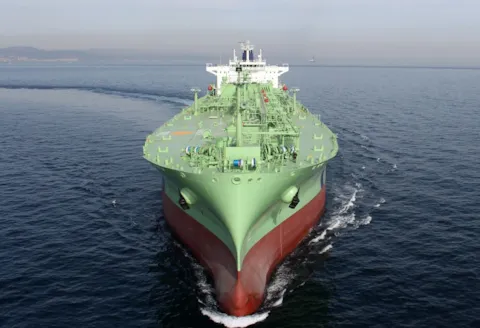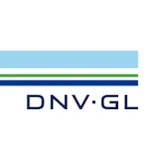Get regular gas carrier insights!
Don’t be left out. Join the many others and sign up today to receive the latest insights.
sign up
Last year, BW LPG announced the signing of contracts for the retrofitting of four LPG-propelled dual-fuel engines, the first such order of its kind in shipping. BW LPG expects the first retrofitting to take place in Q1 2020. Pontus Berg reveals the thinking behind this groundbreaking project.


Pontus Berg has over 20 years of shipping experience from Ship Owners and Technical Management companies. Prior to joining BW LPG in 2015, Mr Berg was General Manager & Director General of Greenship Gas France and prior to that Technical Manager in Evergas and in Eitzen Gas. Mr Berg holds a Bachelor of Science in Marine Engineering from Kalmar Merchant Marine University.
What were the most compelling economic arguments for converting LPG carriers to run on LPG?

The industry has been burning LNG boil-off as fuel for decades as it was more costly to liquefy. In contrast, LPG carriers have been re-liquefying the boil-off and returning it to the cargo. This practice made sense, as the economics supported the sale of LPG as cargo. Liquefaction is fairly cheap, and, the LPG-burning marine engine technology was not available. Increasingly, however, economic and industry developments are making a compelling case for LPG as fuel. In a market environment where we are seeing high fuel prices, declining LPG prices due to shale gas production, and increasingly stringent environmental regulations, LPG propulsion is starting to look very attractive. When the IMO 2020 sulphur cap takes effect, the price of compliant fuel and availability of HFO for scrubber-fitted vessels will be uncertain. With retrofitted dual fuel engines we have the option to run on LPG when it is more attractively priced, reducing the overall fuel price risk, though conversion is slightly more expensive than scrubber retrofitting. As a company, BW LPG is also looking for ways to reduce our carbon footprint, which LPG as a fuel offers. Burning of LPG in our retrofitted ships also reduces the numbers for PM, NOx, SOx and CO2, which allows us as a company to play our part for future generations. Also, on the operational front, the infrastructure for LPG is already in place. It’s easy to bunker anywhere, and because LPG is a process by-product, it has always been plentiful. LPG as a fuel is a long-term solution.

What about the technical considerations?

The solution for retrofitting our vessels for burning LPG is to install deck tanks for bunkering. This allows our customers flexibility as well. On a spot voyage, we will decide whether to use LPG or compliant fuel, whichever is the cheaper. With a long-term charter, the charterer pays, so the ship can use the cargo as fuel, and the tanks can be used for extra cargo. This offers customers good flexibility. The engine technology is readily available. MAN-ES is currently testing a dual-fuel LPG engine in Copenhagen. We attended a live test, and it was successful, with no disturbance in engine operation during fuel changeovers.

Are there any prerequisites an LPG carrier should meet in order to ensure a successful conversion project?

The best-suited vessels are ships with electronically controlled two-stroke, ‘ME’ engines, where the camshafts and valves are electrically controlled. Owners will still need to replace cylinder heads, but control functions can be adjusted electronically rather than through the replacement of mechanical controls. With this set-up, we can achieve our required rate of return, and since these are modern ships they have a long period to make back our investment.

Who are your main partners and what expertise do they bring to the project?

Wärtsilä is the cargo handling system designer, and MAN-ES is the engine supplier. DNV GL is the advising partner on installation and project management. The project did not require new rules because our vessels are gas carriers built according to the IGC code, and new regulations with the introduction of the IGF code allow the use of LPG as fuel. Bringing LPG into the engine room, however, was unchartered waters. We had to cooperate with flag and class for this. Running on LPG had to be proven as equally safe as running on LNG, which was accomplished through a comprehensive HAZID and HAZOP. We also had dialogue with ports, and in particular, the major US ports. The one requirement they have is that LPG bunkering does not delay cargo loading. We are obliged to use solutions for fully refrigerated, semi-pressurized tanks, as bunkering with high-pressure tanks can delay cargo loading.

How do you rate the potential for success with LPG as fuel in general compared to other alternatives?

The first step has been made, and the advantages will become clearer as we gain experience. It cuts costs when fuel prices are higher. It helps during leaner times, and it is a great booster during the good times. I believe that in a few years, we will be sitting around wondering why we didn’t do this earlier!

Don’t be left out. Join the many others and sign up today to receive the latest insights.
sign up